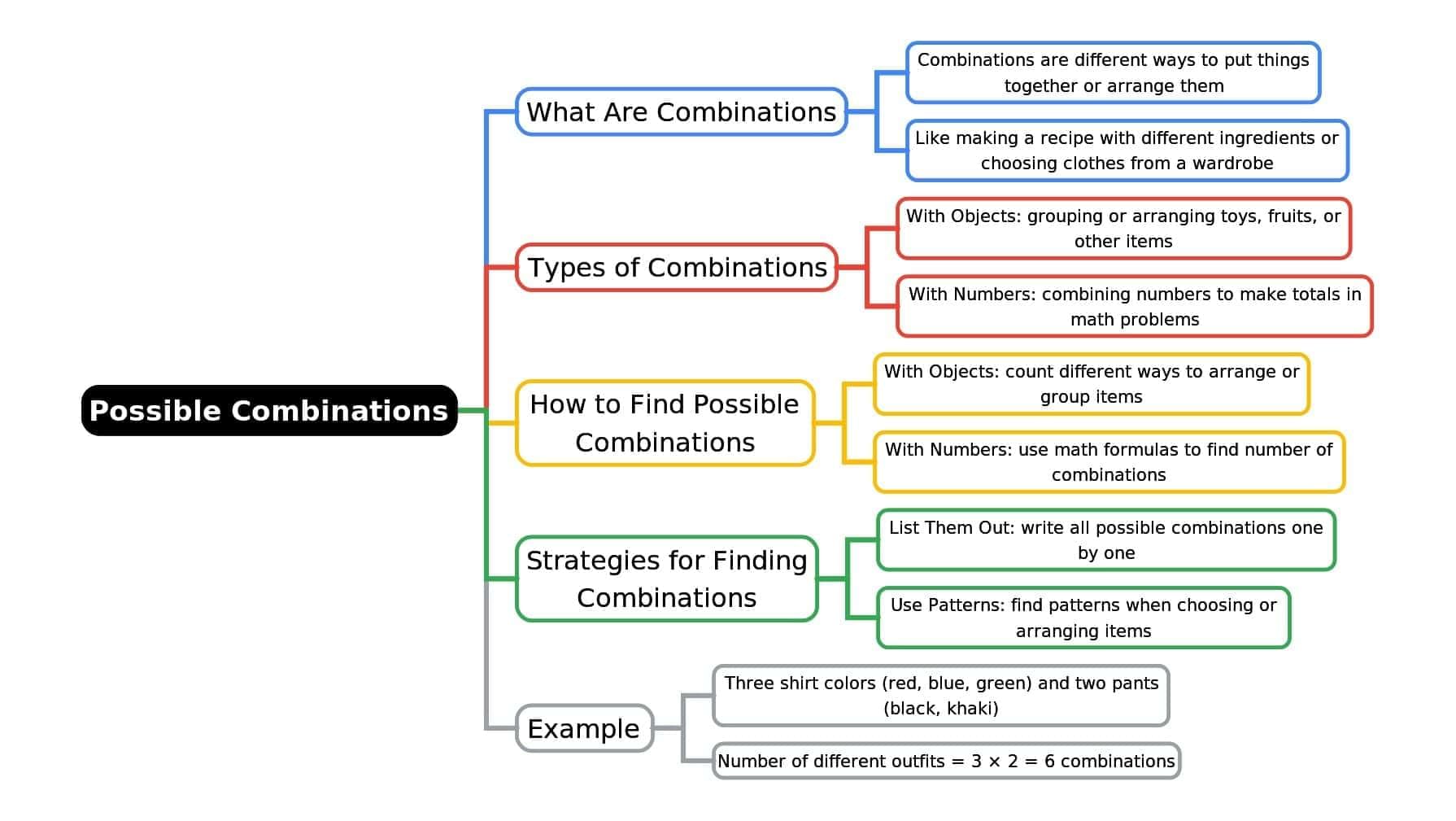Class 4 Exam > Class 4 Notes > Mathematics Olympiad Class 4 > Mind Map: Possible Combinations
Mind Map: Possible Combinations | Mathematics Olympiad Class 4 PDF Download

The document Mind Map: Possible Combinations | Mathematics Olympiad Class 4 is a part of the Class 4 Course Mathematics Olympiad Class 4.
All you need of Class 4 at this link: Class 4
|
33 videos|98 docs|48 tests
|
FAQs on Mind Map: Possible Combinations - Mathematics Olympiad Class 4
| 1. What are the key concepts covered in the topic of possible combinations for Class 3 students? |  |
Ans. The key concepts for Class 3 students regarding possible combinations include understanding basic combinations, recognizing patterns, and applying simple combinatorial principles. Students learn to identify different ways to arrange items, understand the concept of grouping, and explore real-life applications, such as forming teams or selecting items from a set.
| 2. How can students practice combinations effectively at home? |  |
Ans. Students can practice combinations effectively at home by engaging in fun activities such as using everyday objects (like toys or fruits) to form different groups. Parents can create simple games that involve selecting items from a larger set, encouraging children to think about how many different ways they can combine them. Worksheets with problems on combinations can also be helpful for structured practice.
| 3. Why is it important for Class 3 students to learn about combinations? |  |
Ans. Learning about combinations is important for Class 3 students as it helps develop their critical thinking and problem-solving skills. Understanding how to combine different elements fosters creativity and offers a foundation for more advanced mathematical concepts in the future. Additionally, it enhances their ability to make decisions and understand the concept of choice in everyday situations.
| 4. What are some real-life examples where combinations are used? |  |
Ans. Real-life examples of combinations include forming sports teams, selecting toppings for a pizza, or creating outfits from a wardrobe. When children understand how combinations work, they can apply this knowledge to make decisions, such as choosing what to bring for a picnic or selecting books to read from a library.
| 5. How can teachers assess students' understanding of combinations in the classroom? |  |
Ans. Teachers can assess students' understanding of combinations through various methods, such as quizzes, group activities, and hands-on projects. They can present problems requiring students to identify or create combinations and observe their thought processes. Additionally, discussions and presentations on how students arrived at their answers can provide insight into their understanding of the concept.
Related Searches
















